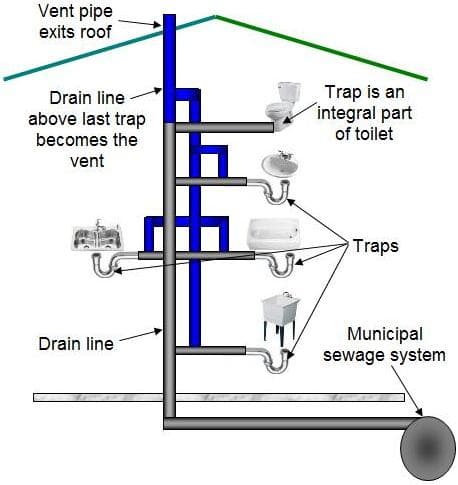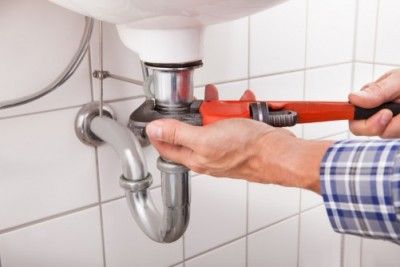The Key Components of Your Property's Plumbing System
Book AppointmentOn this page below you can get lots of professional guidance around Plumbing Installation 101: All You Need to Know.

Recognizing how your home's pipes system functions is vital for every single home owner. From delivering clean water for alcohol consumption, cooking, and bathing to securely getting rid of wastewater, a well-kept plumbing system is vital for your household's health and wellness and convenience. In this comprehensive guide, we'll check out the complex network that makes up your home's pipes and deal pointers on maintenance, upgrades, and managing common issues.
Introduction
Your home's pipes system is greater than just a network of pipes; it's a complicated system that guarantees you have accessibility to tidy water and efficient wastewater removal. Understanding its components and exactly how they collaborate can aid you protect against pricey fixings and make certain every little thing runs smoothly.
Basic Components of a Plumbing System
Pipelines and Tubes
At the heart of your pipes system are the pipelines and tubing that carry water throughout your home. These can be made of various products such as copper, PVC, or PEX, each with its benefits in regards to toughness and cost-effectiveness.
Components: Sinks, Toilets, Showers, and so on.
Components like sinks, commodes, showers, and bath tubs are where water is used in your home. Understanding how these fixtures connect to the plumbing system helps in diagnosing problems and planning upgrades.
Valves and Shut-off Points
Valves control the flow of water in your pipes system. Shut-off shutoffs are critical throughout emergency situations or when you require to make fixings, permitting you to separate parts of the system without interrupting water flow to the entire house.
Water Supply System
Key Water Line
The major water line attaches your home to the local supply of water or a private well. It's where water enters your home and is distributed to numerous fixtures.
Water Meter and Pressure Regulatory Authority
The water meter actions your water use, while a stress regulator guarantees that water flows at a safe stress throughout your home's pipes system, stopping damage to pipes and components.
Cold Water vs. Warm water Lines
Comprehending the distinction in between cold water lines, which provide water directly from the main, and warm water lines, which carry warmed water from the water heater, aids in troubleshooting and preparing for upgrades.
Drain System
Drain Pipes Pipes and Traps
Drain pipelines carry wastewater far from sinks, showers, and toilets to the sewage system or septic tank. Catches prevent sewage system gases from entering your home and additionally catch debris that can trigger clogs.
Air flow Pipelines
Ventilation pipelines enable air into the water drainage system, stopping suction that could reduce drain and cause catches to empty. Correct air flow is vital for maintaining the honesty of your plumbing system.
Importance of Appropriate Drainage
Making certain appropriate water drainage prevents back-ups and water damage. Regularly cleaning drains pipes and preserving catches can avoid costly repair services and extend the life of your pipes system.
Water Heating System
Sorts Of Water Heaters
Hot water heater can be tankless or traditional tank-style. Tankless heating units warm water as needed, while storage tanks save heated water for prompt usage.
How Water Heaters Link to the Pipes System
Recognizing just how water heaters connect to both the cold water supply and hot water circulation lines aids in diagnosing issues like inadequate warm water or leakages.
Upkeep Tips for Water Heaters
Routinely flushing your hot water heater to get rid of debris, checking the temperature settings, and examining for leaks can prolong its life expectancy and improve energy effectiveness.
Typical Pipes Concerns
Leakages and Their Reasons
Leakages can occur as a result of maturing pipes, loose installations, or high water pressure. Dealing with leakages without delay protects against water damages and mold and mildew growth.
Blockages and Obstructions
Obstructions in drains and bathrooms are commonly caused by flushing non-flushable products or a build-up of oil and hair. Using drain screens and bearing in mind what drops your drains pipes can prevent clogs.
Indications of Pipes Troubles to Expect
Low water pressure, slow-moving drains pipes, foul odors, or unusually high water bills are indications of prospective pipes troubles that need to be resolved without delay.
Pipes Upkeep Tips
Normal Inspections and Checks
Schedule annual plumbing evaluations to catch problems early. Try to find indications of leakages, rust, or mineral build-up in taps and showerheads.
Do It Yourself Upkeep Tasks
Basic tasks like cleaning tap aerators, looking for bathroom leaks using color tablet computers, or protecting exposed pipes in cool climates can protect against significant plumbing issues.
When to Call a Specialist Plumbing Professional
Know when a plumbing issue requires specialist expertise. Trying intricate fixings without correct understanding can cause more damage and higher fixing prices.
Updating Your Plumbing System
Reasons for Upgrading
Updating to water-efficient components or changing old pipes can improve water quality, lower water costs, and boost the value of your home.
Modern Plumbing Technologies and Their Advantages
Discover innovations like smart leakage detectors, water-saving bathrooms, and energy-efficient water heaters that can save cash and minimize environmental impact.
Price Factors To Consider and ROI
Determine the upfront prices versus long-lasting financial savings when taking into consideration plumbing upgrades. Many upgrades spend for themselves with decreased utility costs and fewer fixings.
Environmental Influence and Conservation
Water-Saving Components and Appliances
Setting up low-flow taps, showerheads, and bathrooms can dramatically reduce water usage without giving up performance.
Tips for Lowering Water Usage
Basic habits like taking care of leaks immediately, taking shorter showers, and running full lots of laundry and meals can preserve water and lower your utility expenses.
Eco-Friendly Pipes Options
Consider lasting pipes materials like bamboo for floor covering, which is durable and eco-friendly, or recycled glass for countertops.
Emergency Readiness
Actions to Take During a Plumbing Emergency situation
Know where your shut-off valves lie and exactly how to switch off the supply of water in case of a burst pipeline or major leakage.
Importance of Having Emergency Calls Handy
Maintain contact information for regional plumbers or emergency services conveniently available for fast response during a pipes crisis.
Do It Yourself Emergency Situation Fixes (When Appropriate).
Short-lived fixes like utilizing air duct tape to patch a dripping pipeline or placing a container under a trickling faucet can lessen damages until an expert plumbing professional arrives.
Final thought.
Understanding the composition of your home's pipes system empowers you to preserve it successfully, conserving time and money on repair services. By adhering to normal maintenance routines and remaining educated about modern plumbing technologies, you can ensure your plumbing system operates efficiently for years to come.
Exploring Your Homes Plumbing Anatomy
Water Supply System
Main Water Line: This is where water enters your home from the municipal supply or a private well.
Water Meter: Typically located near where the main water line enters the property, it measures the amount of water used.
Shutoff Valve: It s crucial to know where this is in case of emergencies. It allows you to turn off the water supply to the entire house.
Pipes and Fittings: These distribute water throughout your home. Materials can include copper, PVC, or PEX.
Drain-Waste-Vent (DWV) System
Drains: Located in sinks, showers, and tubs, these carry wastewater away.
Traps: U-shaped pipes under sinks that hold standing water, blocking sewer gases from entering the home.
Vents: Pipes that lead from the DWV system to the outside, preventing vacuum formation and allowing gases to escape.
Sewer Line: Carries all wastewater from the home to the municipal sewer system or a septic tank.
Fixtures and Appliances
Sinks, Toilets, and Showers
Dishwashers and Washing Machines
Water Heaters
Maintenance Tips
Regularly check for leaks in exposed pipes and around fixtures.
Inspect the water heater annually for signs of wear.
Clean drains and traps to prevent clogs and odors.
Know how to shut off water to individual fixtures.
When to Call a Professional
Major leaks or burst pipes
Installation of new pipes or fixtures
Septic tank issues
Remodeling projects that involve plumbing changes
Conclusion
Understanding the anatomy of your home's plumbing is key to maintaining a functional and efficient system. Regular checks and knowing when to call in the experts can save you time, money, and stress.
https://www.mavyn.com/blog/exploring-your-homes-plumbing-anatomy

Exploring Your Homes Plumbing Anatomy
Water Supply System
Drain-Waste-Vent (DWV) System
Fixtures and Appliances
Maintenance Tips
When to Call a Professional
Conclusion
Understanding the anatomy of your home's plumbing is key to maintaining a functional and efficient system. Regular checks and knowing when to call in the experts can save you time, money, and stress.
https://www.mavyn.com/blog/exploring-your-homes-plumbing-anatomy
We were made aware of that article about The Inner Workings of Your Home's Plumbing from a good friend on a different website. Remember to take the time to promote this article if you enjoyed it. I praise you for your time. Revisit us soon.
Book 24/7